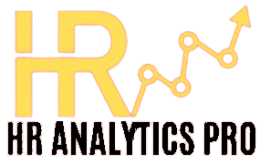Job Rotation
March 4, 2024 2024-03-04 12:18Job Rotation
Job Rotation
What is Job Rotation?
Job rotation is a process of shifting the employees to different roles within an organization. The rotation is generally made among different roles of the same level and isn’t considered a promotion. It benefits by reducing boredom, improving motivation, and providing an opportunity to learn new skills.
Job rotation is commonly held at banks. For example,
- The support desk employee is shifted to the cashier’s position for 2 months.
- And the cashier is shifted to the customers’ desk.
What are the benefits?
Job rotation helps in developing new skills. From this, the employees can create a broader knowledge of different fields. Moreover, as the employees become more aware of the functionalities, the company’s growth becomes consistent. The employees become consistent and motivated in their jobs.
How can a company implement job rotation?
Job rotation should be fairly entitled and equally distributed. Here are some of the things to keep in mind while job rotation;
- Make a list of rotating jobs
- Decide the duration and frequency of rotation
- Set specific criteria for changing the employees’ role or keeping the employee in the same role
- Communicate with your employees
Some examples include:
- A software developer moving over to customer service for a short time to understand how product features impact the user experience.
- An operations analyst rotating between positions in different departments to learn how departments interact with each other and are affected by various workflows.
- A security analyst shifting between different IT roles to study a company’s infrastructure and discover new ways they can apply their cybersecurity skills.
How does it impact employees’ performance?
The purpose of job rotation is to increase the equality between the employees. The employees become more productive, and the performance of the employees becomes efficient.
How does it impact on an organizational level?
The relation between job rotation and employee performance is quite significant. The skills and knowledge are acquired from the job rotation, which enhances the chances of error detection. Thus, employee performance and organizational growth become consistent.
What are real example?
A job rotation aimed at early-career HR professionals might offer a series of eight-month assignments as an HR generalist, recruiter and compensation and benefits professional. The variety of hands-on experiences, as well as the educational sessions and mentoring support, would help the recent grad gain valuable work experience and determine where they might best fit within the organization.






